The oldest black hole discovered by James Webb Space Telescope and Chandra X-ray observatory
- Published
- comments
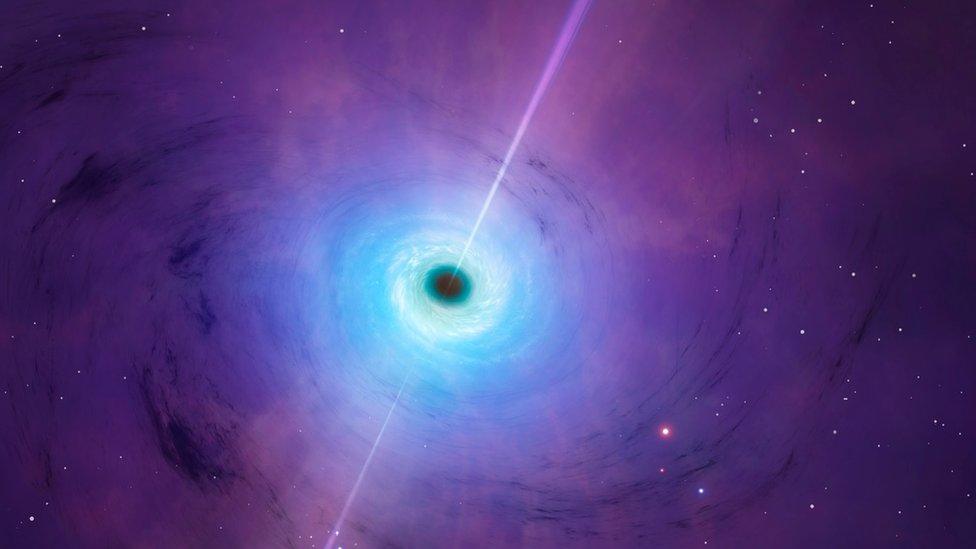
Scientists say they have found the oldest black hole ever discovered.
The huge black hole was born 470 million years after the universe formed.
The universe is thought to have formed during an event known as the Big Bang 13.8 billion years ago, when all the matter in existence exploded outwards from a tiny point and expanded to form the universe as we know it.
The ancient black hole, found at the centre of a galaxy called UHZ1, is 10 times bigger than the one in our own Milky Way galaxy.
Experts believe it shows how supermassive black holes became so huge, so soon after the Big Bang.
What's a supermassive black hole?
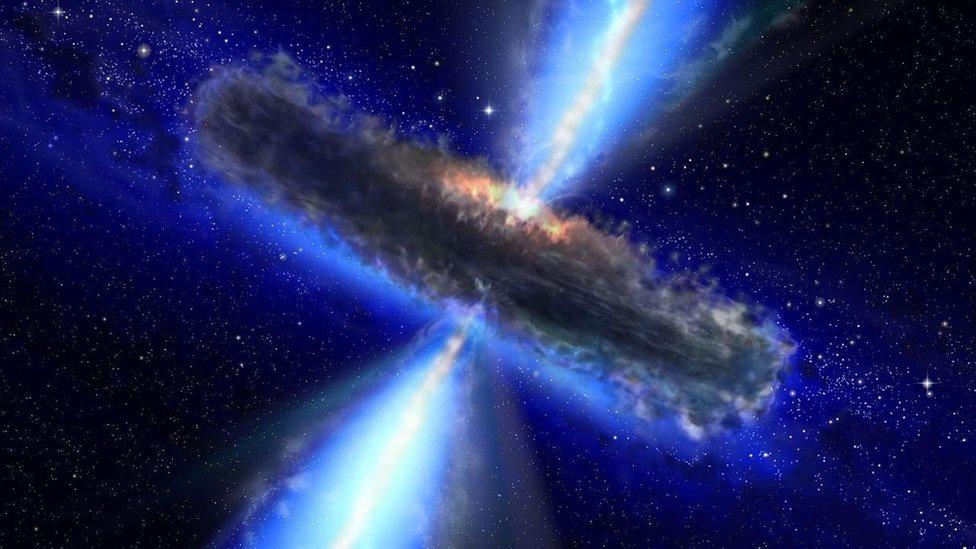
This is an artist's image of a black hole
Every large galaxy has a supermassive black hole at its centre and unsurprisingly, given their name, they are properly massive.
Supermassive black holes are so gigantic they have a mass of more than one million stars the size of our own Sun.
Mass is how much stuff something is made out of and black holes have LOTS of stuff in them, all tightly packed together.
This creates a gravitational pull so strong that not even light can escape.
Why is this black hole special?
Nasa says the discovery proves that supermassive black holes existed soon after the universe was created.
And astronomers believe it could help answer how supermassive black holes, weighing millions to billions of times the mass of our Sun, got to be so huge so soon after the Big Bang.
"There are physical limits on how quickly black holes can grow once they've formed, but ones that are born more massive have a head start.
"It's like planting a sapling, which takes less time to grow into a full-size tree than if you started with only a seed", said Andy Goulding of Princeton University.
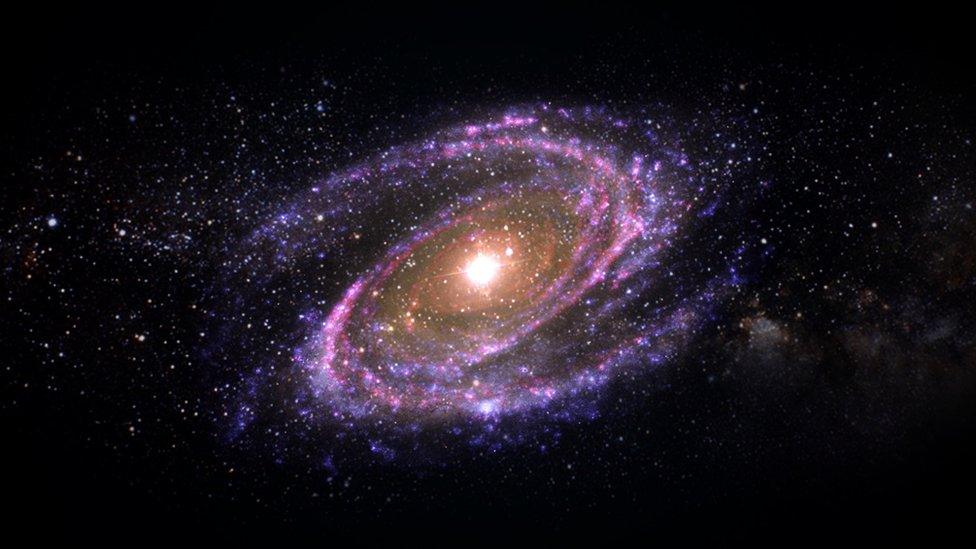
The ancient black hole at the centre of the UHZ1 galaxy weighs between 10% and 100% the mass of all the stars that surround it.
Analysis of the ancient black hole suggests it was massive from the start, weighing between 10% and 100% of the mass of all the stars in the UHZ1 galaxy that surrounds it.
Smaller black holes can form when the centre of an old and very big star falls in on itself, or collapses.
But this black hole, at 10 times bigger than the one at the centre of our Milky Way galaxy and over 13 billion years old, formed during a period when the universe was still a baby.
Experts believe it wasn't made from a collapsing star, but instead from the collapse of massive clouds of gas.
Nasa says black holes formed in this way from gas create "black holes weighing between about 10,000 and 100,000 Suns".
Those that come from stars "create black holes weighing only between about 10 and 100 Suns".
How was the black hole discovered?
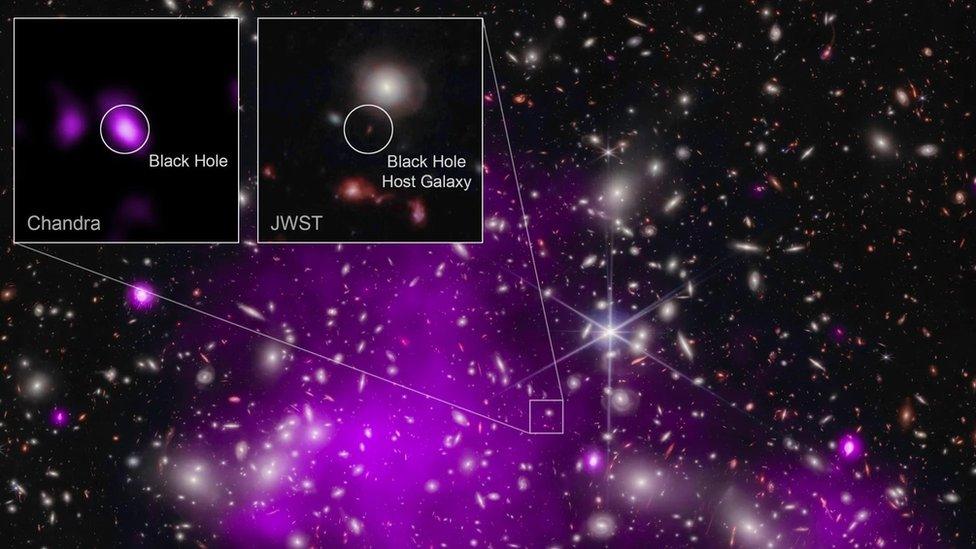
Nasa was able to discover the ancient black hole using the James Webb Space Telescope and the Chandra X-ray observatory
The black hole and its galaxy UHZ1 is 13.2 billion light-years from Earth. One light year is the distance travelled by light in one year.
That means, because of the time it takes light to travel through space, scientists studying the black hole are actually looking back in time at the early period of the universe.
The black hole was discovered using the James Webb Space Telescope and the Chandra X-ray observatory.
Combining their data, scientists detected light from the UHZ1 galaxy and X-rays from the gas around its supermassive black hole, which led to the discovery.
- Published20 April 2022
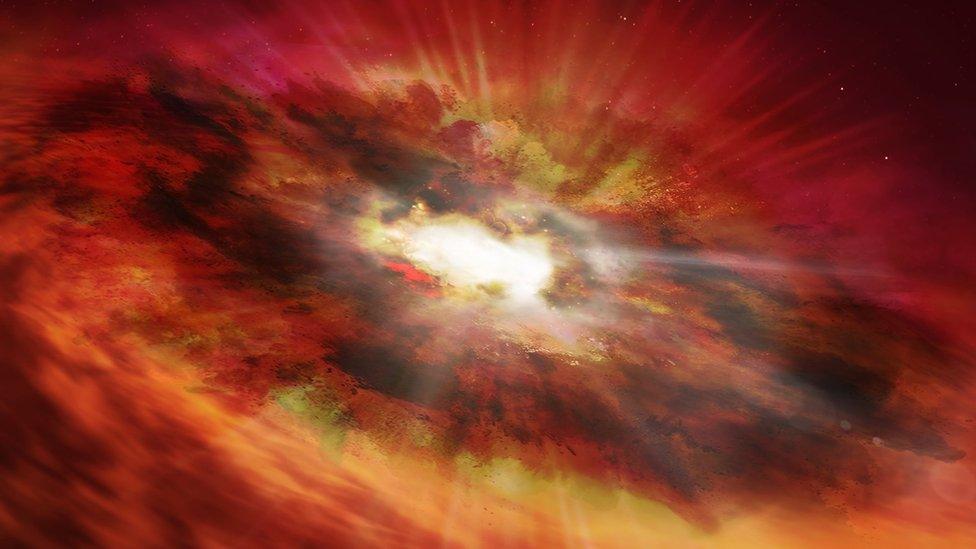
- Published2 October 2023

